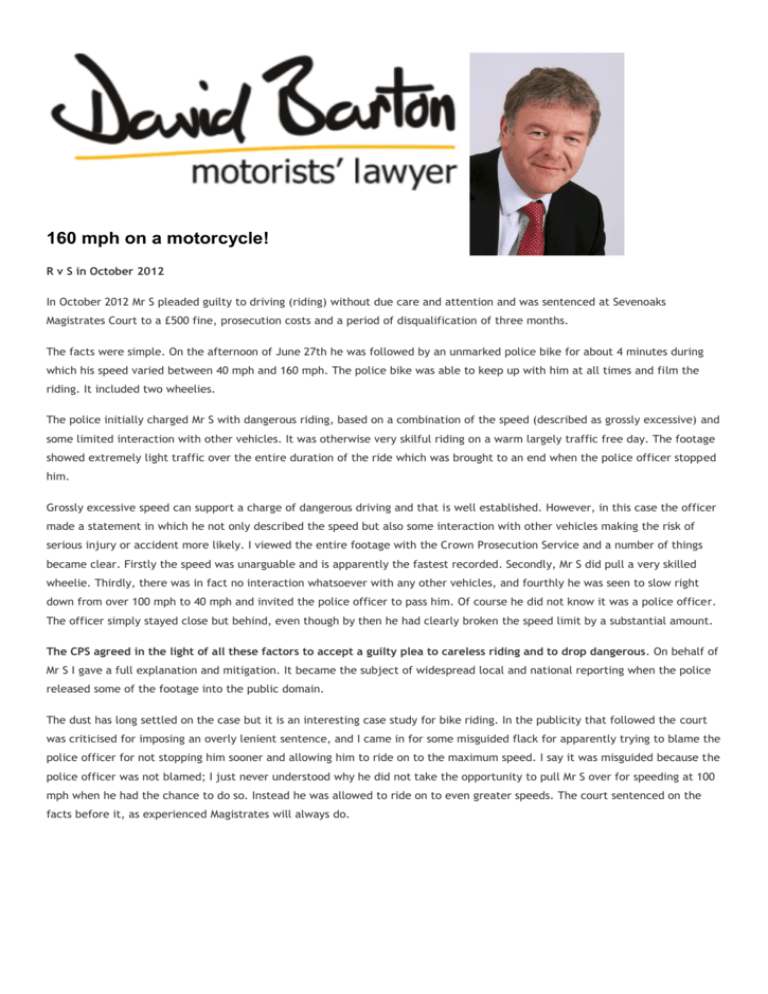160 mph on a motorcycle!
advertisement

160 mph on a motorcycle! R v S in October 2012 In October 2012 Mr S pleaded guilty to driving (riding) without due care and attention and was sentenced at Sevenoaks Magistrates Court to a £500 fine, prosecution costs and a period of disqualification of three months. The facts were simple. On the afternoon of June 27th he was followed by an unmarked police bike for about 4 minutes during which his speed varied between 40 mph and 160 mph. The police bike was able to keep up with him at all times and film the riding. It included two wheelies. The police initially charged Mr S with dangerous riding, based on a combination of the speed (described as grossly excessive) and some limited interaction with other vehicles. It was otherwise very skilful riding on a warm largely traffic free day. The footage showed extremely light traffic over the entire duration of the ride which was brought to an end when the police officer stopped him. Grossly excessive speed can support a charge of dangerous driving and that is well established. However, in this case the officer made a statement in which he not only described the speed but also some interaction with other vehicles making the risk of serious injury or accident more likely. I viewed the entire footage with the Crown Prosecution Service and a number of things became clear. Firstly the speed was unarguable and is apparently the fastest recorded. Secondly, Mr S did pull a very skilled wheelie. Thirdly, there was in fact no interaction whatsoever with any other vehicles, and fourthly he was seen to slow right down from over 100 mph to 40 mph and invited the police officer to pass him. Of course he did not know it was a police officer. The officer simply stayed close but behind, even though by then he had clearly broken the speed limit by a substantial amount. The CPS agreed in the light of all these factors to accept a guilty plea to careless riding and to drop dangerous. On behalf of Mr S I gave a full explanation and mitigation. It became the subject of widespread local and national reporting when the police released some of the footage into the public domain. The dust has long settled on the case but it is an interesting case study for bike riding. In the publicity that followed the court was criticised for imposing an overly lenient sentence, and I came in for some misguided flack for apparently trying to blame the police officer for not stopping him sooner and allowing him to ride on to the maximum speed. I say it was misguided because the police officer was not blamed; I just never understood why he did not take the opportunity to pull Mr S over for speeding at 100 mph when he had the chance to do so. Instead he was allowed to ride on to even greater speeds. The court sentenced on the facts before it, as experienced Magistrates will always do.








